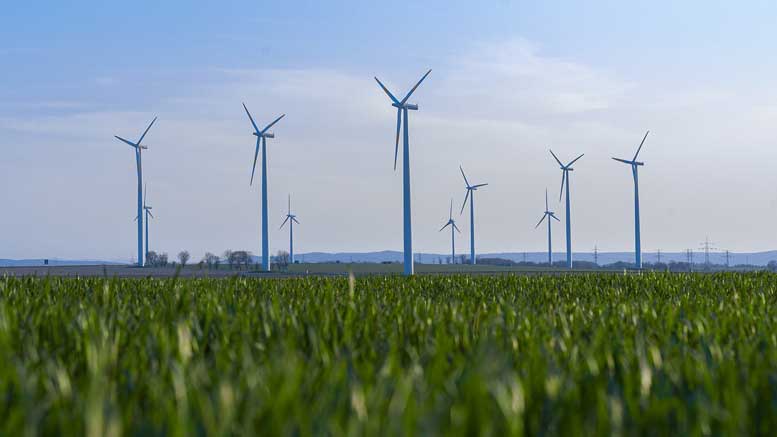|
Click to listen to this article
|
By Roger McKinley III and Trey Reid, RegenAg Nation
Imagine laboring through an entire growing season, investing in fertilizers, crop protection and irrigation, meticulously caring for your crop, and then storing your potatoes for months, only to find yourself facing a harsh reality: the market is flooded with spuds, and you might have no choice but to feed them to cattle or dump them. It’s a painful situation that many potato growers know all too well.
Input costs are rising, profit margins are dwindling, and the reliance on synthetic chemicals doesn’t solve the problem. Add in increasing pressure from regulators and consumer demand for sustainable farming, and it’s clear that the status quo may no longer be sustainable.
Burden of Conventional Inputs
For decades, synthetic fertilizers, fungicides, insecticides and herbicides have delivered impressive yields and high-quality crops. But as their costs continue to climb and their long-term impacts on soil health and sustainability become clearer, farmers are realizing that these tools may no longer offer the reliability they once did.
A typical potato farming program uses 3.1 pounds of pesticides and 10.4 pounds of nitrogen fertilizer per ton of crop. These inputs contribute to greenhouse gas (GHG) emissions and environmental degradation, with over 683,550 pounds of pesticides used annually for potato production in the U.S. The situation is becoming increasingly untenable for farmers trying to balance short-term profits with long-term viability.
Environmental and Financial Risks
Conventional inputs are not just expensive; they can also pose significant environmental risks. Synthetic fertilizers are major contributors to GHG emissions, and they can leach into water systems, leading to pollution and algal blooms. Additionally, the overuse of pesticides has created resistant pests and depleted soil quality, making it harder to maintain high yields without even more chemicals.
Farmers face a dilemma: continue using synthetic inputs and risk environmental and economic disaster, or switch to alternatives and risk short-term financial losses. The costs of maintaining the status quo are rising, but the shift to more sustainable practices is often daunting.
A Sustainable Alternative
The solution to this conundrum lies in a comprehensive approach – what progressive agronomists call the “three-headed monster.” This strategy blends healthy plants, disease-suppressive soils and effective stress management to reduce the reliance on harsh chemicals. These techniques, which are already being employed by companies like RegenAg Nation, have led to pesticide reductions of up to 90 percent while maintaining yield and quality standards.
This shift involves inputs that improve plant function, reduce oxidative stress and fight soil pathogens biologically through antagonism, competition for resources and antibiosis. Combined with fundamental practices like cover cropping, composting and reduced tillage, growers can build more disease-suppressive soils and plants that are better equipped to fend off pests and diseases. Adding precision irrigation, optimized mineral nutrition and biostimulants helps plants thrive under stress, lessening the necessity for some synthetic chemicals.
Blending Conventional and Regenerative Practices
The future of potato farming doesn’t have to mean choosing between conventional and regenerative methods; it’s about blending the two – at least initially. By integrating sustainable practices like disease testing, microbial inoculants and “soft chemistry” sprays, growers can reduce pesticide use without sacrificing crop protection. Likewise, optimizing plant nutrition with cleaner, low-salt fertilizers and carbon-based products helps reduce dependence on synthetic nitrogen.
This hybrid approach offers a common sense alternative: healthier soils, fewer chemical inputs, and sustained or improved yields.
Managing Costs and Risks
The biggest hurdle for many farmers is the fear of reduced profitability during the transition to sustainable methods. If done correctly, adopting these changes should lead to stable output in terms of yield and quality without increasing input expenses. However, studies have shown that in the long term, sustainable farming can lead to significant cost savings.
The lever that might be required for the producer to adopt change is either incentivization of what’s being produced, or less risk in the form of reduced input costs or stability of outcome. Farming operations that push forward individually will find rewards in the future, albeit shouldering some of the risk in the short term. The best outcome for all entities in the supply chain is to create brand new value-added markets in the supply chain that demand a premium because of the way potatoes are grown. Consumers are clear that they prefer to consume products that avoid conventional pesticides and are environmentally friendly and will make that choice with their pocketbooks, but standards must be in place.
Capturing Consumer Demand
A new driver in the push for sustainability is consumer demand. While organic potatoes command a 51 percent price premium, a middle ground exists for growers who adopt low-chemical, environmentally friendly farming methods. Potatoes marketed as “sustainably grown” or “low-chemical” could capture consumers looking for alternatives without the steep price tag of organic products.
This isn’t just about consumer preference; it’s also about meeting the sustainability goals set by food companies and processors that are increasingly committed to reducing their GHG emissions. There’s a real opportunity here to create value-added markets for potatoes grown with fewer chemicals, providing growers with a premium for their efforts.
Sharing the Farmers’ Story
Progressive farmers must have the opportunity to highlight their achievements. By breaking away from traditional farming practices and adapting to market demands, they can create value in new markets. As industry pressures push farmers toward restrictive practices, it’s crucial for farmers to take the initiative and demonstrate their ability to surpass these imposed standards. In an intensely competitive market, progressive farmers need a unique selling point because these potatoes are different from the rest.

